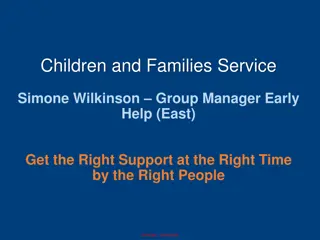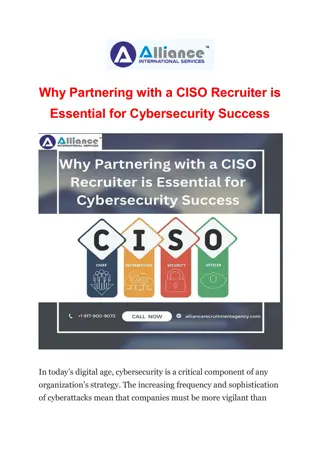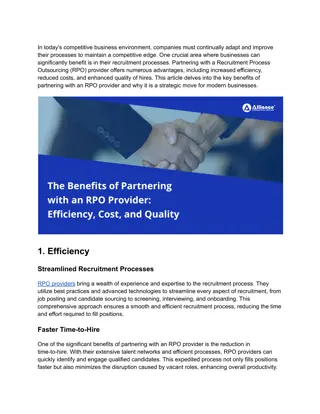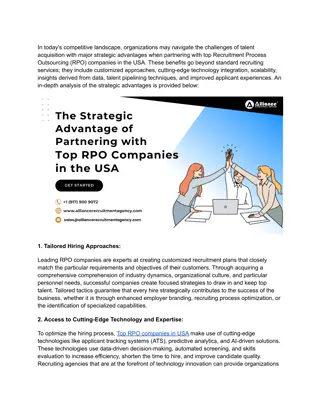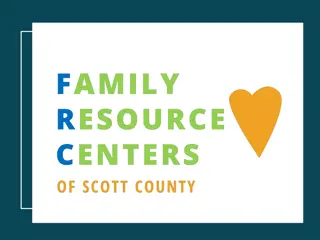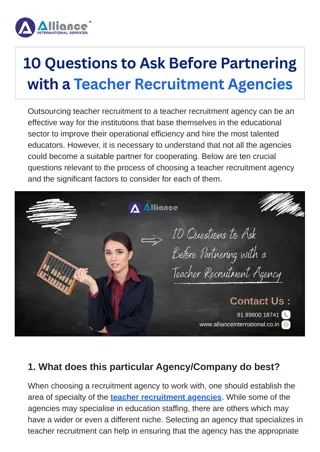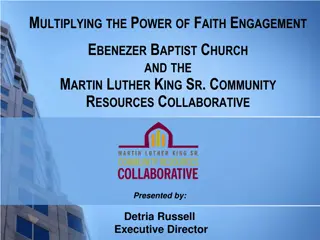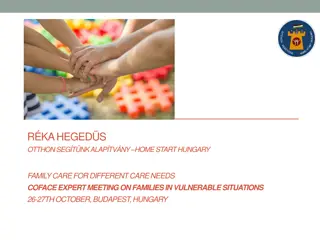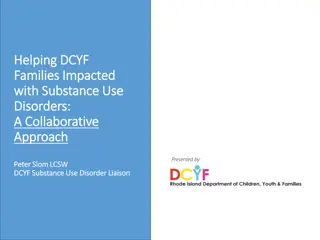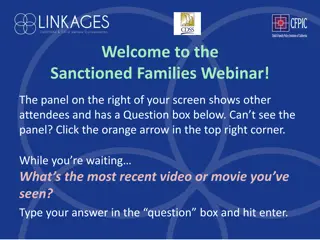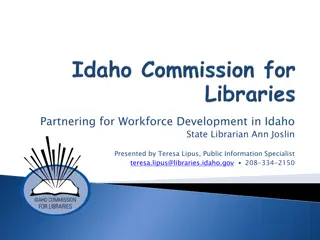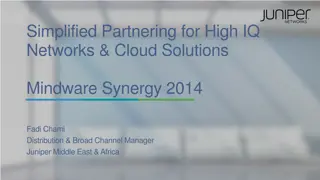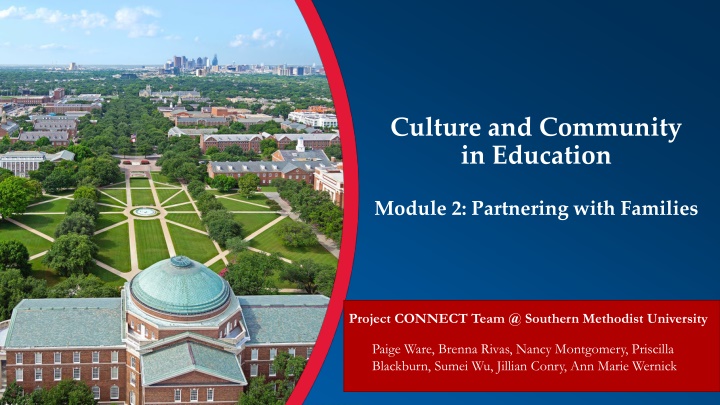
Partnering with Families in Education Module 2 at Southern Methodist University
Explore the Partnering with Families Project by the CONNECT Team at Southern Methodist University. Learn about legal rights of English Language Learners, best practices for serving ELL families, and strategies for family outreach. Discover resources and take quizzes to enhance your understanding.
Uploaded on | 0 Views
Download Presentation

Please find below an Image/Link to download the presentation.
The content on the website is provided AS IS for your information and personal use only. It may not be sold, licensed, or shared on other websites without obtaining consent from the author. If you encounter any issues during the download, it is possible that the publisher has removed the file from their server.
You are allowed to download the files provided on this website for personal or commercial use, subject to the condition that they are used lawfully. All files are the property of their respective owners.
The content on the website is provided AS IS for your information and personal use only. It may not be sold, licensed, or shared on other websites without obtaining consent from the author.
E N D
Presentation Transcript
Culture and Community in Education Module 2: Partnering with Families Project CONNECT Team @ Southern Methodist University Paige Ware, Brenna Rivas, Nancy Montgomery, Priscilla Blackburn, Sumei Wu, Jillian Conry, Ann Marie Wernick
Acknowledgements Creating the Ongoing Funded by Project CONNECT Network Needed to Engage Communities and Teachers Office of English Language Acquisition Grant #T365Z160106
Overview of the module: Component Estimated Timing Tasks LEARN: What do you already know about the rights of English Language Learners? Take this pop quiz to refresh yourself on the laws pertaining to student rights so that you can communicate clearly with families. 8 minutes LEARN: Learning objectives: Describe the legal rights of English learners in public schools Learn best practices for serving ELL families Apply specific strategies for conducting family outreach and family-teacher conferences to families from different linguistic and cultural backgrounds Know how to obtain translation and interpretation services in multiple languages Understand ways to advocate for creating consistent and equitable outreach for all families LEARN LEARN 2 minutes EXPLORE: Best Practices for Serving ELLs and Their Families You will read a resource guide put together by Teaching Tolerance, part of the umbrella advocacy program of the Southern Poverty Law Center. 20 minutes EXPLORE: ELL Parent Involvement You will watch a 5.24-minute video with tips for involving parents then apply several principles from your reading to demonstrate how the strategies could be modified for families of ELLs. EXPLORE: Parent-Teacher Conference Tips You will watch a 10-minute video with tips for involving parents, then apply additional principles from your reading to demonstrate how the strategies could be modified for families of ELLs. EXPLORE EXPLORE 5.24 minutes 20 minutes APPLY / APPLY / ASSESS ASSESS APPLY: Practice Test Questions 10 minutes
LEARN about Legal Rights of ELLs This short quiz is to test your knowledge of some of the legal rights of ELLs. The quiz is taken directly from the Teaching Tolerance website. You will not receive a grade. Once you have taken the quiz, you will have the opportunity to visit the website and learn more about preferred terms and some basic legal history. Source: ELL 101 | Learning for Justice
Question 1 Failure to enroll a child who resides in the school's geographic boundaries due to the child's or parents immigration status could be interpreted as a violation of federal law. ( ) True ( ) False
Question 2 Parents can opt out of having their child receive ELL services. ( ) True ( ) False
Question 3 Schools do not have to screen ELL students for advanced programs, such as Gifted/Talented, Advanced Placement and International Baccalaureate. ( ) True ( ) False
Question 4 ELL students can t be considered for eligibility in special education while they are receiving ELL services. ( ) True ( ) False
Question 5 Once a student leaves an ELL program, they do not have to be monitored. ( ) True ( ) False
How many questions did you get right? 1. Failure to enroll a child who resides in the school's geographic boundaries due to the child's or parents immigration status could be interpreted as a violation of federal law. TRUE. Title VI of the Civil Rights Act of 1964 prohibits discrimination in public schools on the basis of race, color or national origin. The U.S. Supreme Court also ruled in Plyler v. Doe (1982) that such discrimination violates the Equal Protection Clause of the 14th Amendment. 2. Parents can opt out of having their child receive ELL services. TRUE. Even if families opt out of ELL services, the student must still be assessed for proficiency annually. This refers to federal law; state laws may differ. 3. Schools do not have to screen ELL students for advanced programs, such as Gifted/Talented, Advanced Placement and International Baccalaureate. FALSE. Screenings must be inclusive and provide language accommodations. 4. ELL students can t be considered for eligibility in special education while they are receiving ELL services. FALSE. A school cannot delay a special education evaluation because a student is receiving ELL instruction. 5. Once a student leaves an ELL program, they do not have to be monitored. FALSE. All students must be monitored for two years after exiting an ELL program.
Explore: Best Practices for Serving ELLs and their Families Read this resource guide, which is published by the Southern Poverty Law Center on behalf of Teaching Tolerance. Later in the module, after reading this guide and watching several upcoming videos, you will apply what you have learned. Therefore, you might want to keep the pdf tab open or download the guide: TT-ELL-Best-Practicies-Guide-WEB-v2-Nov2017.pdf (learningforjustice.org)
Best Practices for Serving ELLs and their Families Social inclusion opportunit ies for ELL students Anti-bias strategies for use with ELL students Culturally responsive ELL instruction To be elaborated in the next few slides, respectively Do s and Don ts of communicating with families of ELL students Celebrate multilingualism Language access (e.g., access to translators/ interpreters) Enrolling ELL and Immigrant and Immigrant students Administrative spotlight: Opt- outs To download the article: TT-ELL-Best-Practicies- Guide-WEB-v2-Nov2017.pdf (learningforjustice.org)
Culturally Responsive ELL Instruction Use a variety of teaching modalities. Make the curriculum relevant. Examples: To apply movement, call-and- response, claps, stomps, chants and cheers to highly engage ELL students who may not understand every word. Examples: To integrate stories, readings and perspectives that reflect the history, immigration and community of ELL students into the units you teach. Familiarize yourself with cultural norms. Respect differences in cultural norms. Avoid making assumptions about ELL students and instead actively ask questions or seek out some information about the messages their behavior may be indicating. Get to know your students contextual skills and educational backgrounds. To be aware that educational structures and norms can vary from country to country. Distinguish between academic English and conversational/home English. - It takes 5 to 7 years to become proficient in conversational English and 7 to 11 years to reach proficiency in academic English. - Although some ELL students may speak conversational English well, they may still need support to develop their academic English skills. Honor your students first languages. If you know a student is bilingual or multilingual, find ways to leverage it in your instruction and celebrate its use at home and at school. Source: TT-ELL-Best-Practicies-Guide-WEB-v2-Nov2017.pdf (learningforjustice.org)
Social Inclusion Opportunities for ELL Students Level the playing field. - Offer leveled reading material in a student s native language, and engage ELL students in the same curriculum as their native peers. - They may require additional scaffolding or alternative texts, but everyone should be given access to the same essential questions, learning targets and deep understandings. Limit pull-out instruction time. Avoid pulling ELL students out of class for separate instruction because it limits their contact time with peers and causes a disadvantage for them to develop new friendships and learn new skills. Model being a language learner. Go beyond the classroom. - Create opportunities for ELL and non-ELL students to interact and work together outside of the classroom. - Working alongside their peers helps ELL students gain a sense of accomplishment and take pride in knowing that they have something to contribute. - Encourage ELL students to share/teach you and other students about their languages and cultures. - Learn some phrases in your students native languages and then use them. - Apply for a grant that will fund language classes for school staff. Source: TT-ELL-Best-Practicies-Guide-WEB-v2-Nov2017.pdf (learningforjustice.org)
Celebrate Multilingualism To be aware of which languages are spoken in the school Integrate multiple languages into school events and celebrations, not just administrative tasks. Enhance the value of multilingualism, even encouraging adults in the school to learn another language. Try to form language-based affinity groups that enable ELL students to communicate about important topics and add value to the school. Create dual-language learning opportunities, either at the school or in partnership with other local institutions or organizations.
Dos and Donts of Communicating with Families of ELL Students Do s Don ts Be clear about the purpose of meetings. Use the student as the translator. Asking the student as the translator can put the student in an awkward position where loyalty and respect for their teachers and their family can feel contradictory. Be mindful of the potential power differential between parents or guardians and teachers. Assume that any bilingual adult will be a successful translator. Using families of other students, or other students themselves, can lead to privacy issues. What is gained in increased clarity will be lost if families feel embarrassed or disrespected. Provide a translator if you don t speak the parents or guardians primary language fluently. Start the meeting on a positive note. Use terms that everyone understands and avoid acronyms and jargon. Visit the family in their home. Source: TT-ELL-Best-Practicies-Guide-WEB-v2-Nov2017.pdf (learningforjustice.org)
Family -Teacher Conference Tips (Additional Information) Instead of these. . . Try these. . . Sitting on the same side, or angled, of the table Sitting with a computer screen between you Setting a focus Staying open-ended Asking how they prefer to be called Assuming Mr./Mrs. titles Being warm Being task-oriented Acknowledging time and offering options Acknowledging time constraints Beginning with the positive Getting straight to the point Asking them questions about their child Telling what you know about their child Asking open-ended questions Asking yes/no questions Bringing artifacts Offering wordy verbal examples Giving 1-2 specific actionable pieces of advice Giving generic advice Ending with concrete steps and gratitude Ending with Do you have any questions?
Language Access Source: TT-ELL-Best-Practicies-Guide-WEB-v2-Nov2017.pdf (learningforjustice.org)
Administrative Spotlight: Opt-outs For ELL students, opting out means that the students will not be enrolled in language assistance programs. Opt-out laws vary from state to state and in states with opt-out laws, it should be a truly voluntary option. In other words, ELL families make their informed decisions. Source: TT-ELL-Best-Practicies-Guide-WEB-v2-Nov2017.pdf (learningforjustice.org)
Administrative Spotlight: Opt-outs (continued) Source: TT-ELL-Best-Practicies-Guide-WEB-v2-Nov2017.pdf (learningforjustice.org)
Enrolling ELL and Immigrant Students: Best Practices Plan for language access and make sure translated resources are visible in the office and on the website. Train all employees who do registration and enrollment activities in proper procedures. Include front office staff who are the first people to interact with visitors and answer phone calls. Remove all requests for social security numbers from all forms communicating registration requirements. Provide a wide range of document types that families can show to prove a student s age and residency. Prepare a home language survey for families to fill out when enrolling. Source: TT-ELL-Best-Practicies-Guide-WEB-v2-Nov2017.pdf (learningforjustice.org)
Suggested Anti-bias Strategies for Use With ELL Students Source: TT-ELL-Best-Practicies-Guide-WEB-v2-Nov2017.pdf (learningforjustice.org)
Suggested Anti-bias Strategies for Use With ELL Students (continued) Source: TT-ELL-Best-Practicies-Guide-WEB-v2-Nov2017.pdf (learningforjustice.org)
Apply/Assess: Question 1 A high school ESL teacher hosts a career day in which bilingual professionals attend and give presentations about how proficiency in more than one language has helped them succeed. Which of the following is a primary benefit of the presentations for ELLs? A. Identifying with members of the community who speak their language B. Understanding the advantages of being multilingual C. Choosing best career paths that align with their goals D. Learning which companies emphasize multilingual careers
Apply/Assess: Question 2 An elementary school with a high number of ELLs wants to increase the participation of ELL families in the school's Parent-Teacher-Organization (PTO). Which of the following will encourage the greatest involvement by families of ELLs in the PTO? A. Asking the teachers to send home flyers detailing the activities led by the PTO B. Having the principal call each of the ELL families to ask them to become members of the PTO C. Providing translators at the PTO meetings while covering meaningful topics for ELL families D. Offering English classes for the parents of ELLs so that they can fully participate in PTO meetings
Apply/Assess: Question 3 A school is planning a meeting for ESL families to focus on parental involvement. The goal is to make the families feel welcome and provide them with the most effective ways to support language development at home. Which THREE of the following are the most effective approaches to help build trust with ESL families? Select the THREE that apply. A. Demonstrating to parents how to continue to build on foundational skills B. Having bilingual support personnel in attendance during the meeting C. Providing American snacks and drinks during the meeting D. Holding the meeting during the school day E. Encouraging parents to interact with their children in their first language
Answers to the questions: Question 1: B Question 2: C Question 3: A, B, C

